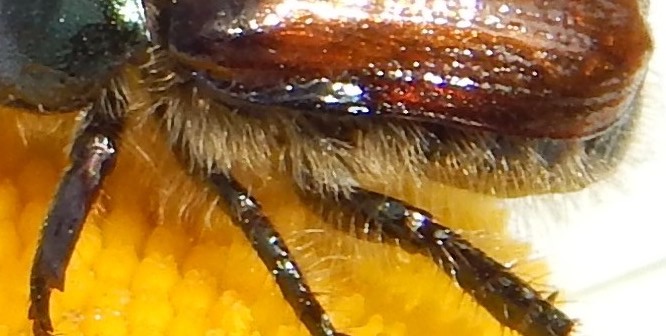
[262] Phyllopertha horticola, Garden Chafer
Hoplia philanthus, Welsh Chafer
Introduction
Phyllopertha horticola, the Garden Chafer, and Hoplia philanthus, the Welsh Chafer, are two related species of Scarab beetles.
Many of the species within the family Scarabaeidae are called Chafers, sometimes Flower Chafers, Rose Chafers or Leaf Chafers, but the group also includes June Beetles (or May Beetles,) dung beetles and others.
Phyllopertha horticola may also be called the Garden Foliage Beetle
Taxonomy
Kingdom – Animals
Phylum – Arthropods
Class – Insects
Order – Coleoptera (Beetles)
Suborder – Polyphaga
Infraorder – Scarabaeiformia
Superfamily – Scarabaeoidea
Family – Scarabaeidae
Subfamily – Rutelinae (Leaf Chafers)
Tribes – (Uncertain)
Genus – Phyllopertha; Hoplia
Scientific Name -Phyllopertha horticola; Hoplia philanthus
There are so many changes that I can’t give an agreed taxonomy below the family level. Many of the subfamilies of Scarabaeidae have been elevated to family level or demoted to tribe level without universal agreement. The subfamily Rutelinae is sometimes considered a separate family, Rutelidae.
Name
Beetle comes via Middle English from Germanic roots, as a diminutive of bite. Chafer also comes via Middle English from Germanic roots, meaning some kinds of beetle.
The ancient Greek phyllon means leaf. Horticola, of course, means garden.
Hoplia may come from Greek roots, meaning heavily armed. Phil-anthos means loves-flower.
Description
There are about a hundred families of beetles (out of about two hundred) with representatives found in the UK. The Scarab Beetles, Scarabaeidae, may contain about 30 000 species, if we include some taxonomic groups that have been or will be split off, then less than a hundred of these species are found in the UK and of these about ten or twenty are leaf chafers, Rutelinae or Rutelidae.
I will not attempt to go into the anatomical differences that define the families of beetles or lower groups, or even the genera and species. You can use the links below to see all the blog entries in the Beetle Category.
- Phyllopertha horticola is the only species of Phyllopertha found in the UK.
Its elytra are chestnut brown with hairy edges. The head and thorax are a very dark green with dotted indentations. Antennae are short with three-pronged ends.
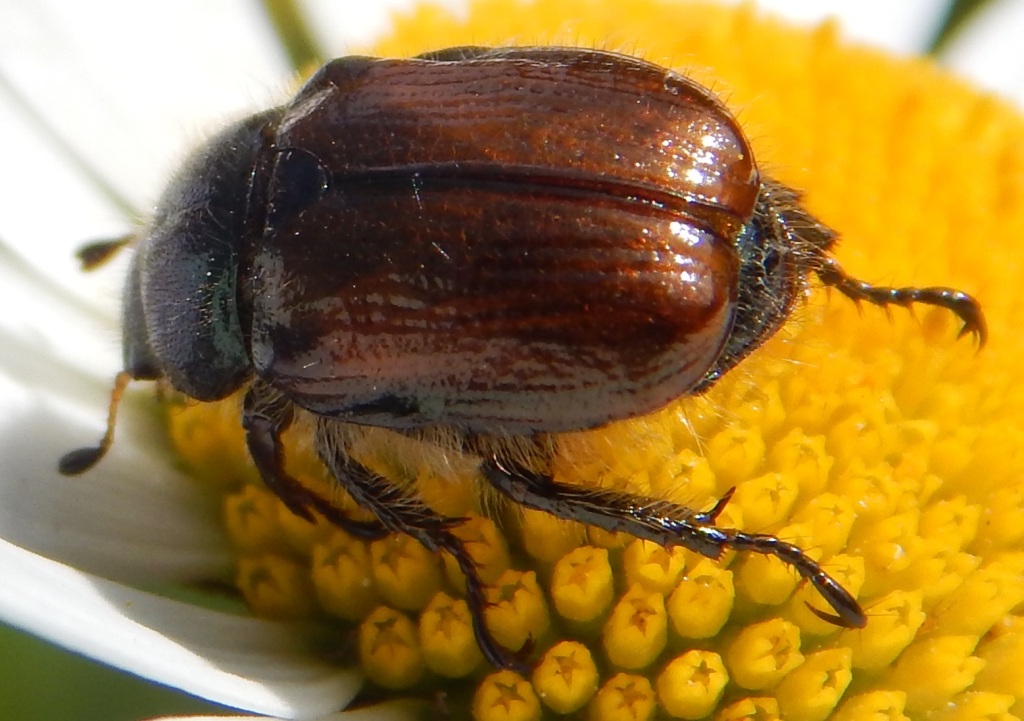
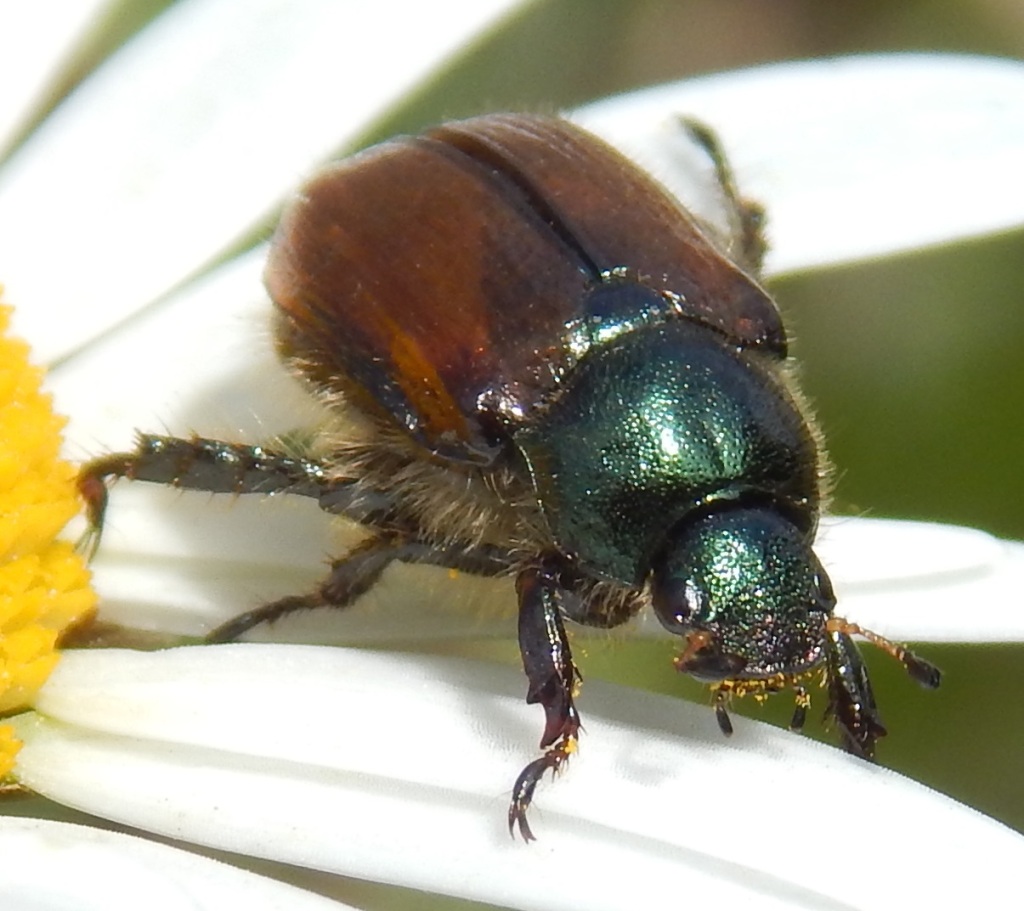
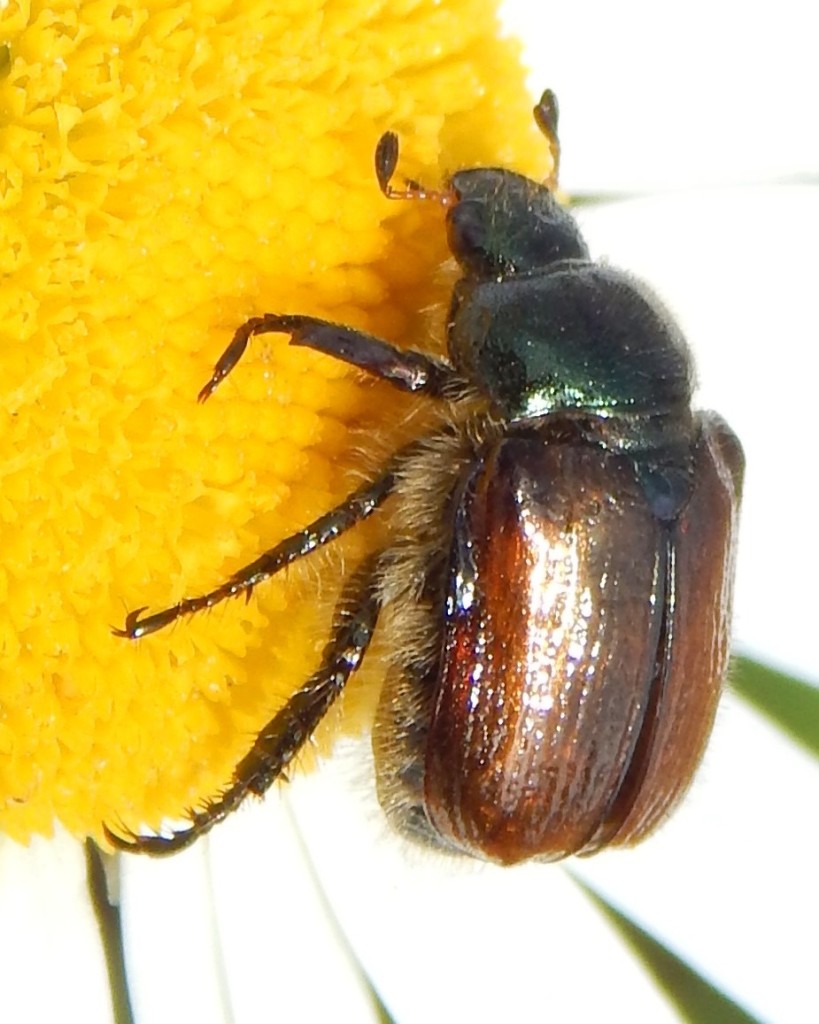
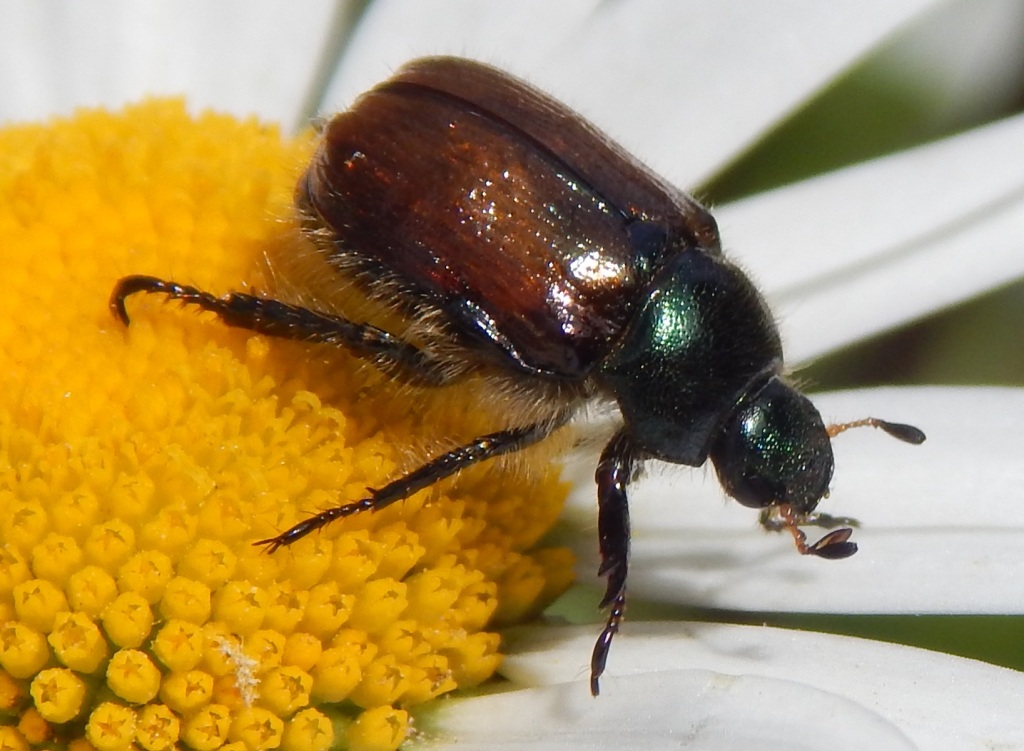
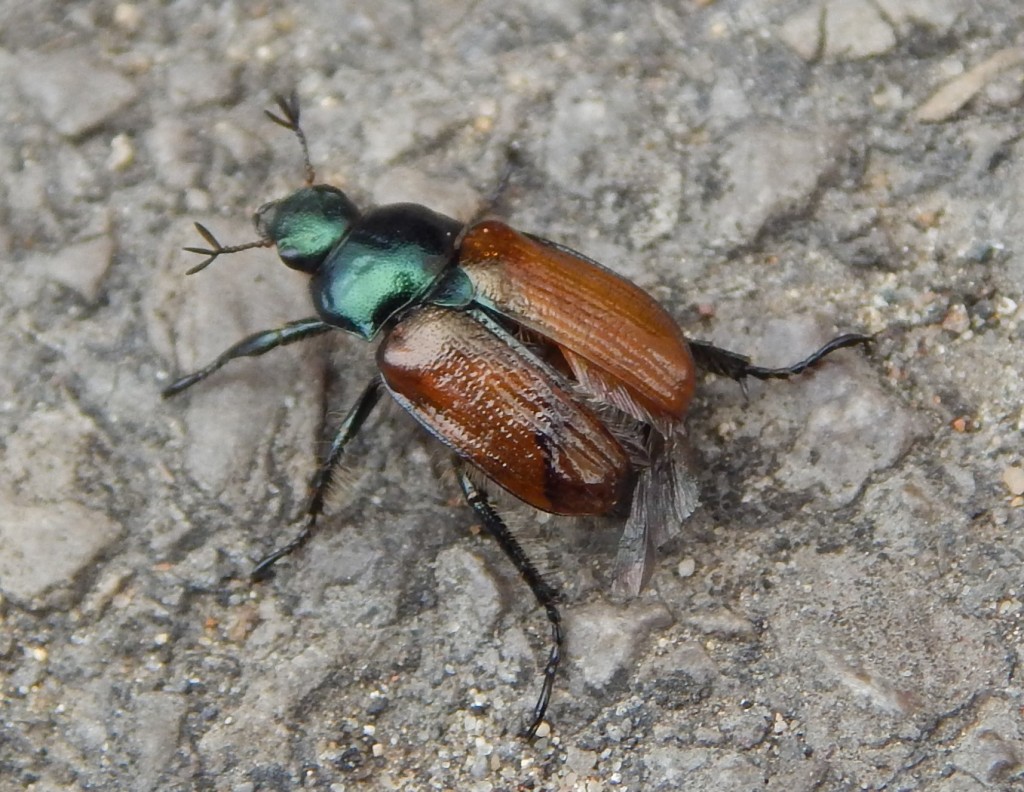
Eggs are laid in the soil. The larvae feed on grass, cereal and clover roots, without doing significant damage. They overwinter in the larval stage. In March, after a short period they pupate. Adults may emerge in large numbers and are often seen on the foliage of [358] Viburnum or [103] Hawthorn or other trees or shrubs. Adult Garden Chafers eat leaves and can be pests on roses or fruit trees.
- Hoplia philanthus is the only species of Hoplia found in the UK.
It looks very similar to Phyllopertha species until you look closely at the end of its legs. (The hind legs have a single claw where Phyllopertha have two.) The elytra are brown and hairy. The head and thorax are dotted but black (in comparison to the dark green of the Garden Chafer.)
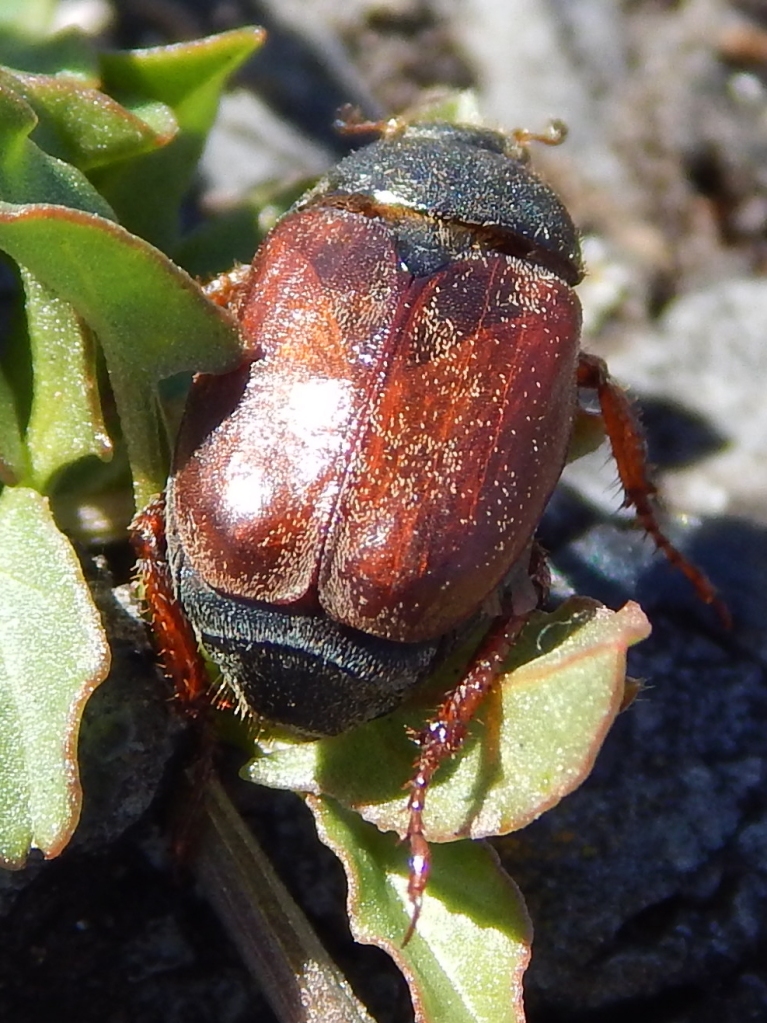
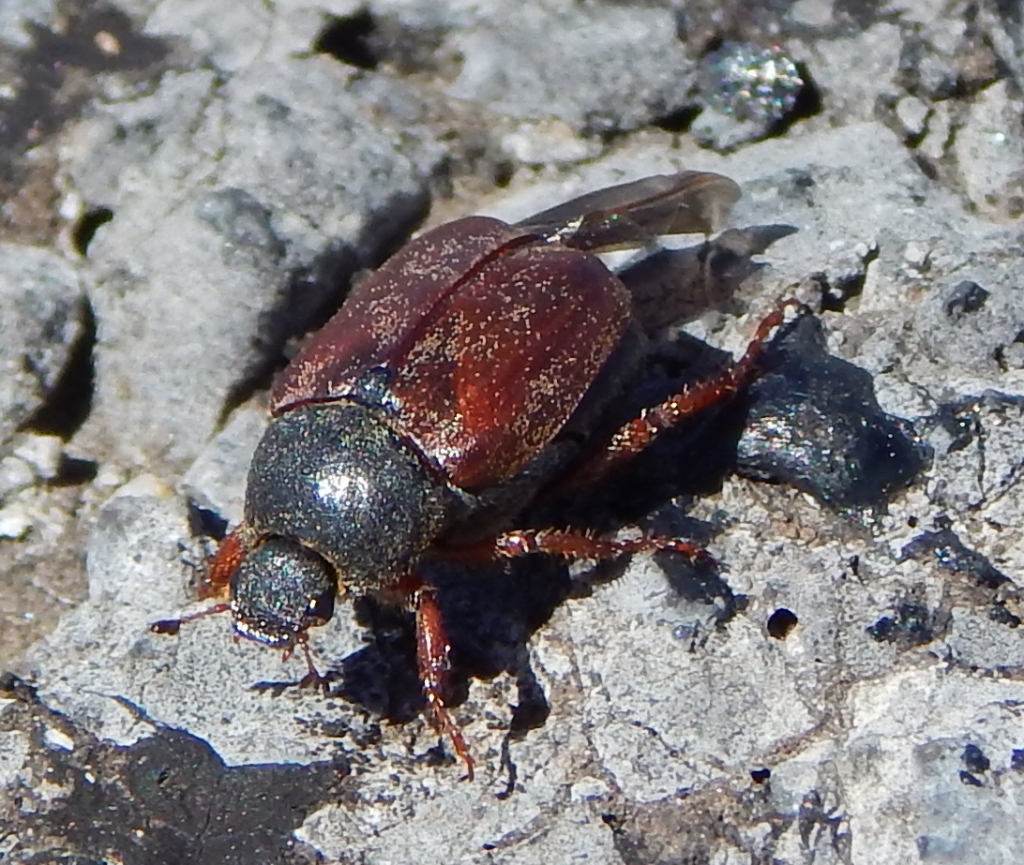
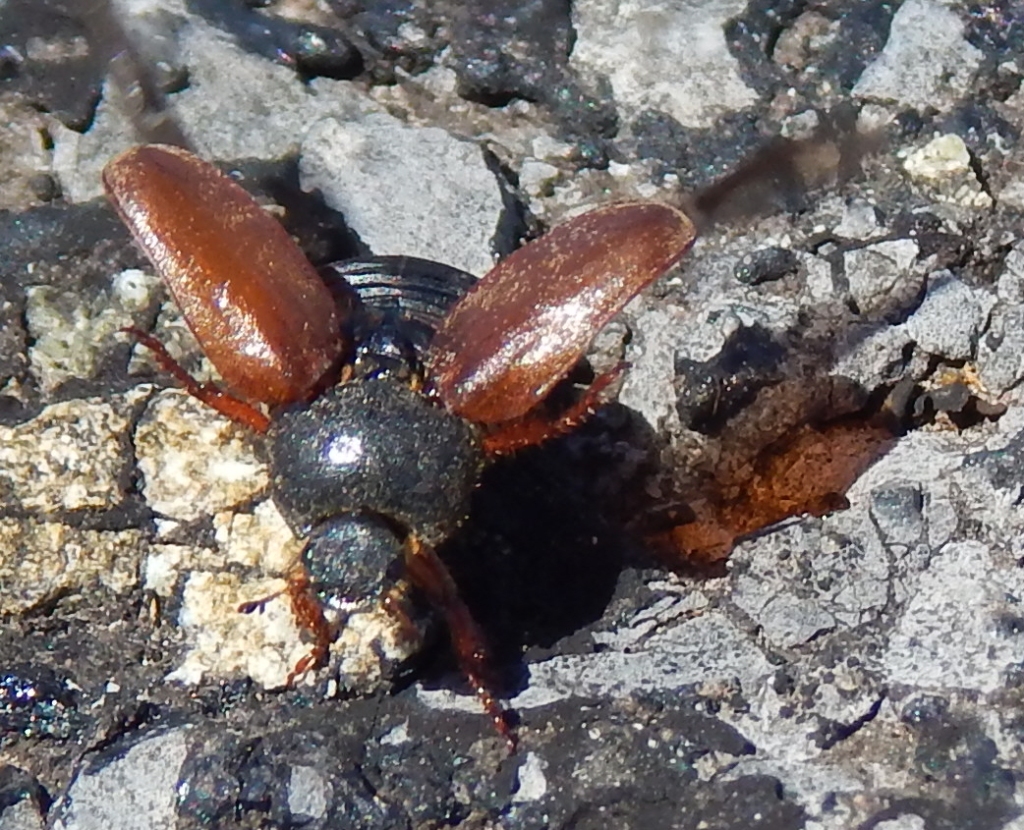
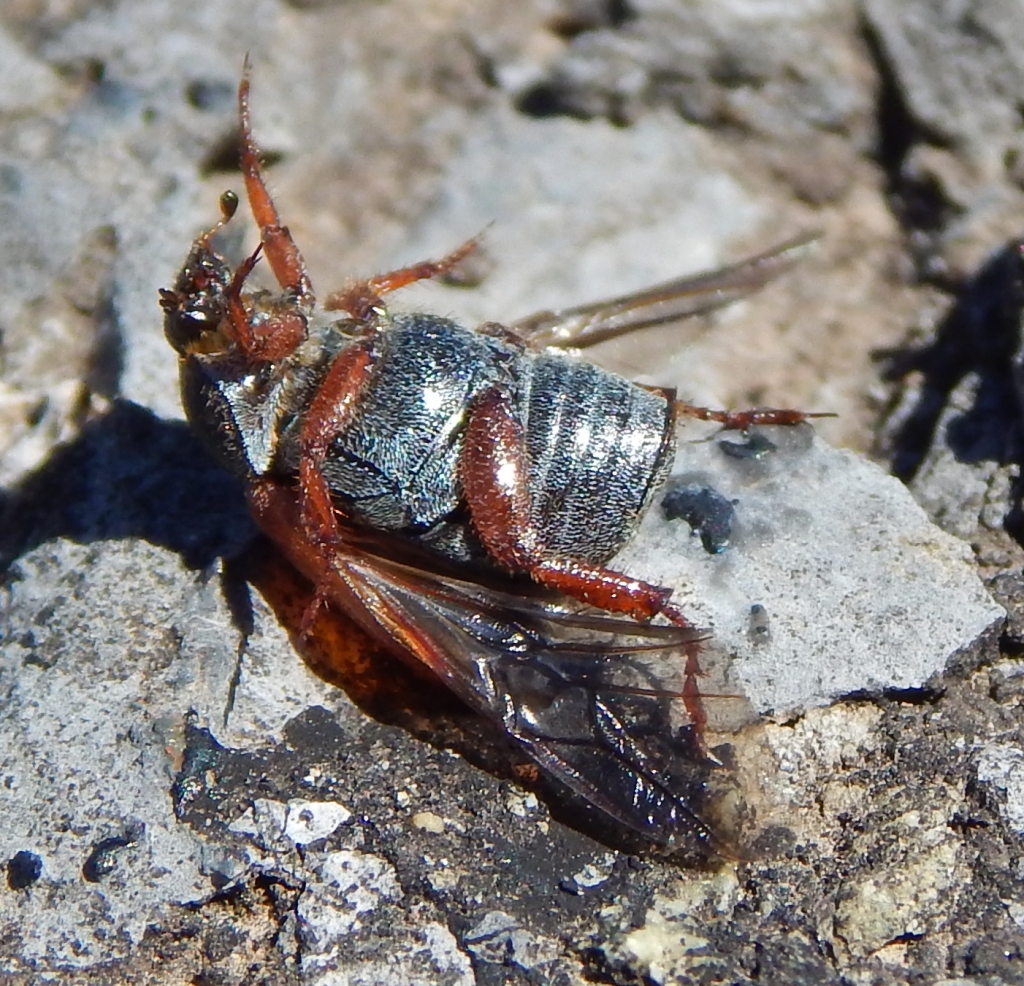
Eggs are laid in the ground and larvae feed on fine roots. They overwinter as larvae, pupate around May and the adults live for a short while in summer. The adults eat flowers and leaves such as [304] Rose, [306] Bramble, [051] Birch and [142] Beech trees.
Habitat
The Garden Chafer has a sporadic distribution across central and northern Europe. It is common across Britain, especially the west. It likes parks and grassland.
The Welsh Chafer has a sporadic distribution across central and western Europe. It is fairly common in Wales and parts of West England. It likes scrubland and open grass, especially hills and mountains.
Other Notes
The Welsh Chafer shown above seemed to be trying out its wings to learn to fly. It was photographed in Wales at the top of a mountain.
See also
You may see many other species of beetles. I haven’t necessarily selected the most common ones, just the ones I have seen.
